You searched for: 数字货币游戏,加密货币游戏,数字币游戏,ust博彩游戏,【www.2266.com,复制打开网址】,unit泰达币博彩网站,区块链游戏排名,区块链游戏nft,区块链游戏平台,nft游戏有哪些,nft是什么游戏,以太坊游戏,区块链游戏赚钱网站,币圈游戏,区块链博彩平台,网址kaefhfkccdckbghcd
<< Previous | Displaying results 51-100 of 1751 for "数字货币游戏,加密货币游戏,数字币游戏,ust博彩游戏,【www.2266.com,复制打开网址】,unit泰达币博彩网站,区块链游戏排名,区块链游戏nft,区块链游戏平台,nft游戏有哪些,nft是什么游戏,以太坊游戏,区块链游戏赚钱网站,币圈游戏,区块链博彩平台,网址kaefhfkccdckbghcd" | Next >>
-
United Nations Relief and Rehabilitation Administration - Photographs
Media EssayThe United Nations Relief and Rehabilitation Administration (UNRRA) was created at a 44-nation conference in 1943. Its mission was to provide economic assistance to European nations after World War II and to repatriate and assist refugees.
-
Architecture of the United States Holocaust Memorial Museum
Media EssayIn designing the United States Holocaust Memorial Museum, the late architect James Ingo Freed,...
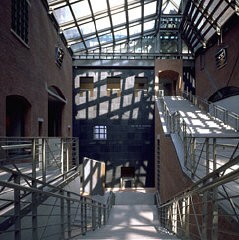
-
Jewish refugee from Vienna upon arrival in the United Kingdom
PhotoA Jewish refugee girl from Vienna, Austria, upon arrival in Harwich after her arrival in England on a Kindertransport. United Kingdom, December 12, 1938.
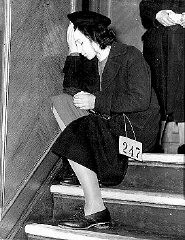
-
Judge Thomas Buergenthal and members of the United Nations Human Rights Committee
PhotoJudge Thomas Buergenthal (top row, fifth from left) and other members of the United Nations Human Rights Committee. 1995.

-
Jewish refugee children from Children's Transport (Kindertransport) arrive in the United Kingdom
PhotoJewish refugee children, part of a Children's Transport (Kindertransport) from Germany, soon after arriving in Harwich. Great Britain, December 2, 1938.

-
Jewish refugee children from Germany soon after arrival in the United Kingdom
PhotoJewish refugee children from Germany—part of a Children's Transport (Kindertransport)—at the holiday camp at Dovercourt Bay, near Harwich, shortly after their arrival in England. Dovercourt Bay, Great Britain, after December 2, 1938.

-
Charlene Schiff describes difficulties in gaining entry to the United States in the aftermath of the Holocaust
Oral HistoryBoth of Charlene's parents were local Jewish community leaders, and the family was active in community life. Charlene's father was a professor of philosophy at the State University of Lvov. World War II began with the German invasion of Poland on September 1, 1939. Charlene's town was in the part of eastern Poland occupied by the Soviet Union under the German-Soviet Pact of August 1939. Under the Soviet occupation, the family remained in its home and Charlene's father continued to teach. The Germans…

-
Gilbert and Eleanor Kraus with the 50 Austrian Jewish children they brought to the United States
PhotoGilbert and Eleanor Kraus (seated in the center, next to the ship's captain) pose with the 50 Austrian Jewish children they brought to the United States. Photograph taken in June 1939. All the children rescued by the Krauses were from families that had previously tried to escape Nazi territory. After the children arrived in the United States, they were sent to live with foster families until their parents were able to immigrate. However, many were never reunited with their families.
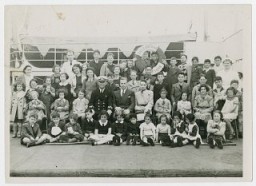
-
Hans Vogel's diary entry describing the voyage to the United States
ArtifactHans Vogel and his family fled Paris following the German invasion. They eventually received papers allowing them to immigrate to the United States. During this time, Hans kept a diary that contains postcards, hand-drawn maps, and other illustrations of their flight. This page describes the voyage on board the Nyassa to the United States. Hans was born in Cologne, Germany on December 3, 1926. The family left Germany in 1936, settling in Paris. They remained there until the outbreak of World War II.…

-
How did the United States government and American people respond to Nazism?
Discussion QuestionConsideration of American responses to Nazism during the 1930s and 1940s raises questions about the responsibility to intervene in response to persecution or genocide in another country.
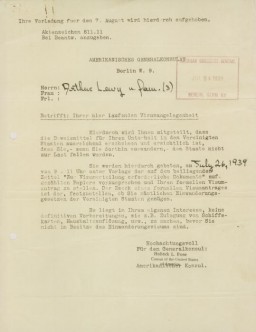
-
Martin Niemöller on a visit to the United States after World War II
PhotoMartin Niemöller, a German theologian and pastor, on a visit to the United States after the war. A leader of the anti-Nazi Confessing Church, he spent the last seven years of Nazi rule in concentration camps. United States, October 4, 1946.
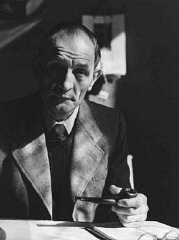
-
Regina with Rozalia and Miles Lerman en route to the United States
PhotoRozalia (Krysia Laks) Lerman, Miles Lerman, and Regina Laks stand on the deck of the Marine Perch while en route to the United States. January 1947.
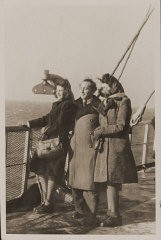
-
Thomas with his mother, Gerda, before Thomas's departure for the United States
PhotoThomas Buergenthal with his mother, Gerda, before Thomas's departure for the United States. Bad Neuheim, Germany, summer 1951. With the end of World War II and collapse of the Nazi regime, survivors of the Holocaust faced the daunting task of rebuilding their lives. With little in the way of financial resources and few, if any, surviving family members, most eventually emigrated from Europe to start their lives again. Between 1945 and 1952, more than 80,000 Holocaust survivors immigrated to the United…
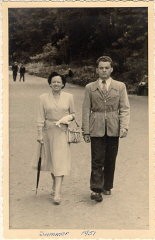
-
Adolf Hitler stands with an SA unit during a Nazi parade
PhotoAdolf Hitler stands with an SA unit during a Nazi parade in Weimar, where the constitution of the Weimar Republic was drafted in 1919. Weimar, Germany, 1931.
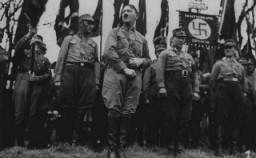
-
Sam Spiegel describes conditions on board a ship to the United States
Oral HistoryIn 1942, Sam was forced into a ghetto in his hometown and assigned to work in a munitions factory. In 1944 he was transported to Auschwitz and then forced to work in a train factory. He survived eight days on a death march after the evacuation of Auschwitz by the Nazis. He was liberated by Soviet units in January 1945. He lived in a displaced persons camp in Germany where worked for the United Nations Relief and Rehabilitation Administration. In 1947, he immigrated to the United States.
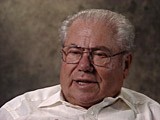
-
Gerda Haas describes postwar reunion with her father in the United States
Oral HistoryGerda was raised in a religious family in the small town of Ansbach, Germany, where her father was the Jewish butcher. She attended German schools until 1936, and then moved to Berlin to attend a Jewish school. She returned to her hometown after Kristallnacht in November 1938. Her family was then ordered to move to Munich, and in July 1939 her father left for England and then the United States. He was unable to arrange for the rest of his family to join him. Gerda moved to Berlin in 1939 to study nursing.…

-
Frima L. describes roundup of Jews for mobile killing unit (Einsatzgruppen) massacre
Oral HistoryWhile Frima's family was confined to a ghetto, Nazis used her father as an interpreter. He later perished. By pretending not to be Jews, Frima, her mother, and sister escaped a German mobile killing unit massacre. They were later discovered and jailed. Again, her mother devised an escape. Frima's mother and sister were smuggled to Romania, while Frima wandered in search of safekeeping until her mother could arrange to smuggle her out. In Romania, they were reunited and liberated.

-
Irene Hizme and Rene Slotkin describe being reunited in the United States in 1950
Oral HistoryIrene and Rene were born Renate and Rene Guttmann. The family moved to Prague shortly after the twins' birth, where they were living when the Germans occupied Bohemia and Moravia in March 1939. A few months later, uniformed Germans arrested their father. Decades later, Irene and Rene learned that he was killed at the Auschwitz camp in December 1941. Irene, Rene, and their mother were deported to the Theresienstadt ghetto, and later to the Auschwitz camp. At Auschwitz, the twins were separated and subjected…

-
Frima L. describes escape from mobile killing unit massacre
Oral HistoryWhile Frima's family was confined to a ghetto, Nazis used her father as an interpreter. He later perished. By pretending not to be Jews, Frima, her mother, and sister escaped a German mobile killing unit massacre. They were later discovered and jailed. Again, her mother devised an escape. Frima's mother and sister were smuggled to Romania, while Frima wandered in search of safekeeping until her mother could arrange to smuggle her out. In Romania, they were reunited and liberated.

-
What were some similarities between racism in Nazi Germany and in the United States, 1920s-1940s?
Discussion QuestionLearn about some aspects that are similar and some that are different in the history of racial antisemitism in Germany and racism in the United States.
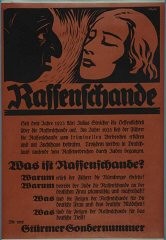
-
How did the shared foundational element of eugenics contribute to the growth of racism in Europe and the United States?
Discussion QuestionLearn more about the shared foundational element of eugenics on the history of racial antisemitism in Germany and racism in the United States

-
How did different goals and political systems shape racism in Nazi Germany and the United States?
Discussion QuestionThis discussion question focuses on the history of racial antisemitism in Germany and its relationship to racism in the United States.

-
United States Declares Genocide in Darfur
Timeline EventSeptember 9, 2004. On this date, Colin Powell labelled the events in Darfur as "genocide."
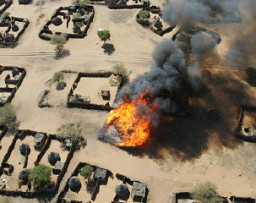
-
Franklin D. Roosevelt Elected President of the United States
Timeline EventNovember 8, 1932. On this date, Franklin D. Roosevelt was elected as the 32nd President of the United States.
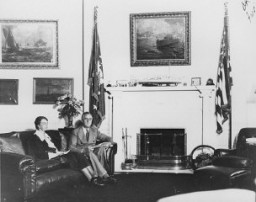
-
United States Declares War on Japan
Timeline EventDecember 8, 1941. On this date, Franklin D. Roosevelt asked the US Congress to declare war on Japan following the attack on Pearl Harbor.
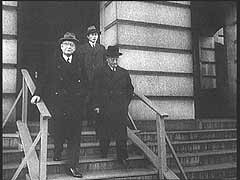
-
Historian Peter Black describes the legislation used to deal with Nazi offenders living in the United States
Oral HistoryIn the 1980s and 1990s, historian Peter Black worked for the US Department of Justice Office of Special Investigations, as part of a team tracking and prosecuting suspected war criminals. Black later served as the Senior Historian at the United States Holocaust Memorial Museum.

-
Auschwitz fence posts and Elie Wiesel quote on display at the United States Holocaust Memorial Museum
PhotoThis photograph shows Auschwitz fence posts and a quote from Elie Wiesel's Night . They are on display in the third floor tower room of the Permanent Exhibition at the United States Holocaust Memorial Museum. "Never shall I forget that night, the first night in camp, which has turned my life into one long night, seven times cursed and seven times sealed. Never shall I forget that smoke. Never shall I forget the little faces of the children, whose bodies I saw turned into wreaths of smoke beneath a silent…
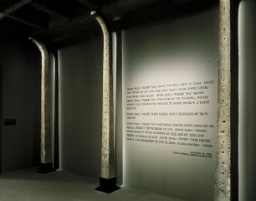
-
Alisa (Lisa) Nussbaum Derman describes joining the Nekama (Revenge) Jewish partisan unit led by Josef Glazman in the Naroch Forest
Oral HistoryLisa was one of three children born to a religious Jewish family. Following the German occupation of her hometown in 1939, Lisa and her family moved first to Augustow and then to Slonim (in Soviet-occupied eastern Poland). German troops captured Slonim in June 1941, during the invasion of the Soviet Union. In Slonim, the Germans established a ghetto which existed from 1941 to 1942. Lisa eventually escaped from Slonim, and went first to Grodno and then to Vilna, where she joined the resistance movement. She…

-
Einsatzgruppen in Liepaja, Latvia
FilmGerman Einsatzgruppen operated in German-occupied territories in eastern Europe during World War II. This rare footage shows a unit during a massacre in Liepaja, Latvia. The film was taken, contrary to orders, by a German soldier. Before the war, the Jewish population of Liepaja stood at more than 7,000 residents. Einsatzgruppen shot almost the entire Jewish population of the town. When the Soviet army liberated the city in 1945, just 20 to 30 Jews remained. Einsatzgruppen carried out various security…
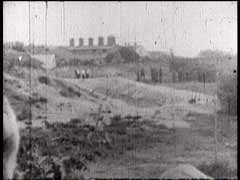
-
A survivor receives medical care
PhotoA former concentration camp prisoner receives care from a mobile medical unit of the United Nations Relief and Rehabilitation Administration. Photograph taken at the Bergen-Belsen displaced persons camp. Germany, May 1946.
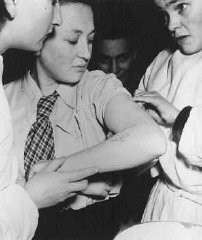
-
Displaced persons at a camp administered by UNRRA
PhotoDisplaced persons knitting and embroidering at a camp administered by the United Nations Relief and Rehabilitation Administration (UNRRA). Sweden, after May 1945.

-
The Riegner Telegram
ArticleThe Riegner telegram detailed the Nazi plan to systematically murder European Jews. It was sent to the British and American governments in August 1942.
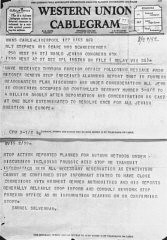
-
African Americans in Nazi Germany
ArticleLearn about African Americans' experiences in Nazi Germany before and during World War II.
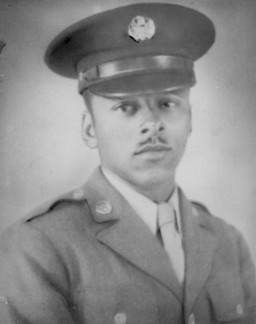
-
The 30th Infantry Division during World War II
ArticleThe 30th Infantry Division participated in major WWII campaigns and is recognized for liberating the Weferlingen subcamp of Buchenwald in 1945.
-
The 29th Infantry Division during World War II
ArticleThe 29th Infantry Division participated in major WWII campaigns and is recognized for liberating Dinslaken, a civilian labor camp, in 1945.
-
The 99th Infantry Division during World War II
ArticleThe 99th Infantry Division participated in major WWII campaigns and is recognized for liberating subcamps of the Dachau concentration camp in 1945.
-
The 10th Armored Division during World War II
ArticleThe 10th Armored Division participated in major WWII campaigns and is recognized for liberating a subcamp of Dachau in 1945.
-
The 103rd Infantry Division during World War II
ArticleThe 103rd Infantry Division participated in major WWII campaigns and is recognized for liberating a subcamp of Kaufering in 1945.
-
The 101st Airborne Division during World War II
ArticleThe 101st Airborne participated in major WWII campaigns and is recognized for liberating the Kaufering subcamp of Dachau in 1945.
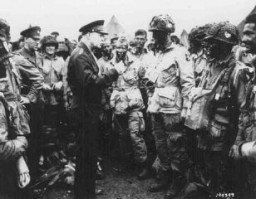
-
The 1st Infantry Division during World War II
ArticleThe 1st Infantry Division participated in major WWII campaigns and is recognized for liberating two subcamps of Flossenbürg in 1945.
-
The 36th Infantry Division during World War II
ArticleThe 36th Infantry Division participated in major WWII campaigns and is recognized for liberating some of the Kaufering subcamps of Dachau in 1945.
-
The 90th Infantry Division during World War II
ArticleThe 90th Infantry Division participated in major WWII campaigns and is recognized for liberating the Flossenbürg concentration camp in 1945.
-
Documents Required to Obtain a Visa
ArticleGerman Jews trying to immigrate to the US in the late 1930s met extreme bureaucratic hurdles, including documentation that was often virtually impossible to obtain.

-
The 12th Armored Division during World War II
ArticleThe 12th Armored Division participated in major WWII campaigns and is recognized for liberating a subcamp of Dachau in 1945.
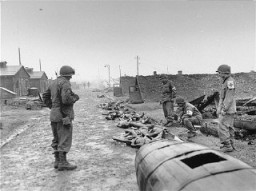
-
The 65th Infantry Division during World War II
ArticleThe 65th Infantry Division participated in major WWII campaigns and is recognized for liberating a subcamp of Flossenbürg in 1945.
-
The 14th Armored Division during World War II
ArticleThe 14th Armored Division participated in major WWII campaigns and is recognized for liberating several subcamps of Dachau in 1945.
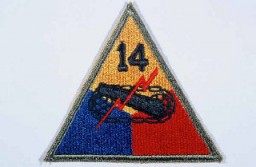
-
The 6th Armored Division during World War II
ArticleThe 6th Armored Division participated in major WWII campaigns and is recognized for liberating the Buchenwald concentration camp in 1945.

-
The 26th Infantry Division during World War II
ArticleThe 26th Infantry Division participated in major WWII campaigns and is recognized for liberating the Gusen subcamp of Mauthausen in 1945.
-
The 104th Infantry Division during World War II
ArticleThe 104th Infantry Division participated in major WWII campaigns and is recognized for liberating the Dora-Mittelbau concentration camp in 1945.
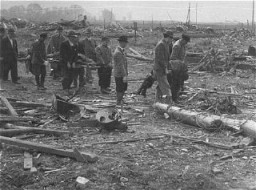
-
The 80th Infantry Division during World War II
ArticleThe 80th Infantry Division participated in major WWII campaigns and is recognized for liberating Buchenwald and the Ebensee subcamp of Mauthausen in 1945.
